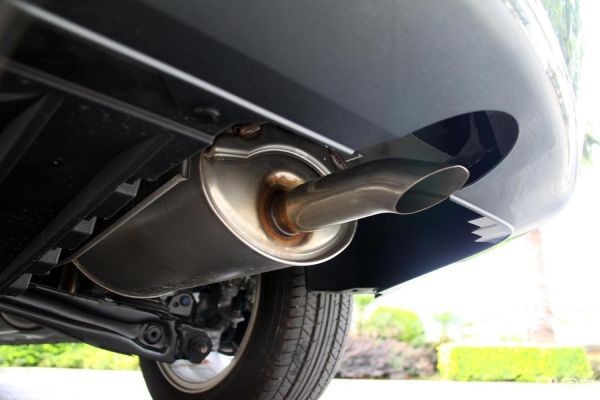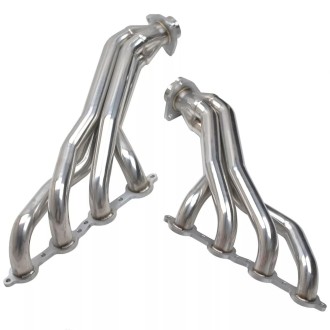The exhaust system of an automobile is a crucial element that is often overlooked by many individuals. When your vehicle operates, it emits gases that consist of carbon dioxide, carbon monoxide, and hydrocarbons. If the exhaust system malfunctions, it can lead to potential issues. Proper maintenance of the exhaust system plays a key role in ensuring the engine operates efficiently and in preventing harmful gases from entering the vehicle cabin. Moreover, it serves as a preventative measure against the onset of rust.Regularly cleaning your exhaust system helps to prevent costly repairs.

How to Get a Like-New Exhaust Pipe in Minutes?
One of the first and easiest things you can clean in your exhaust system is the exhaust pipe.It’s the most visible part of your exhaust system, extending off the end of your bumper or nestled right underneath it. You should regularly clean it because it’s easy for carbon dioxide and moisture to build up, rusting your exhaust pipe. This buildup happens with most exhaust pipes, but you can upgrade to a stainless steel exhaust system. A system like this doesn’t rust or develop a carbon buildup, but you should still clean it regularly with soap and water.
To enhance the appearance of your vehicle's exhaust pipe, you can utilize High Heat spray paint to achieve a fresh and polished look that lasts. Follow these steps carefully for a successful transformation:
- Preparation:Work in a well-ventilated area and protect the surroundings using a drop cloth to prevent overspray.Clean the exhaust pipe thoroughly with Wax & Tar Remover or a fast-acting cleaner. Apply the cleaner liberally, wait for one minute, and then wipe it off with a lint-free cloth.Use painter's tape and masking paper to cover any parts of the car that you do not want to paint.
- Priming:Shake the High Heat Primer can for one minute after the mixing ball starts to rattle. Hold the can 8-12” away from the pipe and spray in a sweeping motion.Apply 2-3 light coats, allowing a few minutes between each. Let the primer dry for one hour.
- Painting:Use the same technique to apply 2-3 light coats of High Heat spray paint to the exhaust pipe. Let the paint dry for 1-2 hours before proceeding to the curing process.
- Curing: Follow the instructions on the High Heat spray's label to complete the curing process.
- Finishing:Once the exhaust pipe is completely cured, it will be ready to hit the road!Remember to follow each step meticulously to ensure the best results (Author, year). These are a few measures, which you can implement to ensure proper maintenance and care of the exhaust system.
Do I Need To Remove My Catalytic Converter?
One of the more important components in your exhaust system that can be tricky to clean is your catalytic converter. This component removes dangerous particulate matter before it leaves your tailpipe, but carbon can quickly build up and clog the filters in this component. With a clog here, your engine won’t run properly.
However, before jumping into cleaning the catalytic converter, you can see if you need to remove it first. You can clean it without removing it, but if there are loose parts inside, you should remove them. One way to check if there are loose parts is by simply hitting the catalytic converter with something like a hammer. Doing this will rattle any parts that may be loose, and if you do hear rattling, it’s time to remove the piece entirely and inspect it further.
Cleaning Your Catalytic Converter
If everything is okay and there aren’t any loose parts, you can start cleaning out your catalytic converter with a catalytic converter cleaner. Depending on your catalytic converter cleaner, you will need to wait until you have a certain amount of gas before pouring the cleaner into your gas tank. It’s important to read the instructions here. Some brands may say you need to have about four gallons of gas in your tank, and you may not need to pour the whole bottle in. This cleaner should break down the buildups in your catalytic converter, but if your check engine light is on, you should take your car to the mechanic to finish the job.
Exhaust Manifold Time
In addition to your exhaust pipes and the catalytic converter, you should clean out your combustion manifold. This part collects the different exhausts from your engine, and all that carbon, rust, soot, and grease adds up. It’s the exhaust manifold’s job, but after a certain amount of time, it simply becomes too much, and the manifold becomes less efficient, hurting your vehicle’s performance in the process.
The first step in cleaning your exhaust manifold is removing it. Depending on your engine, you could even have two manifolds to remove and clean. Like every other component, ensure your vehicle has cooled enough before opening the hood and touching anything. After everything’s cooled, remove the hoses and bolts keeping the manifold in place, and then you can safely remove the exhaust manifold.
To give your exhaust manifold the cleaning it needs, coat the inside of your manifold with lacquer thinner. In the lacquer, you can use steel wool or a wire brush to scrub at the coated spots of your manifold. If some parts of debris are still really thick and not letting up, you can use an electric grinder to break them up. Make sure to cover the entire manifold with the lacquer, and then just let it sit for a while until you’re happy with how everything looks. After this, you just need to clean off the lacquer, and then you can reinstall your manifold, carefully matching the ports to the cylinder heads.
It’s important to know how to properly clean your exhaust system because, without the right and routine cleaning, it can quickly clog up and hurt your truck’s performance. Another reason that cleaning is important is that it will extend the life span of your exhaust parts. When you’re down there, you can see when a piece is breaking or broken and needs replacing. If you’ve found a piece like that, visit CNRautoparts. We’ve got all the exhaust parts you’ll need, including Cummins exhaust parts that can sometimes be hard to find. When you need something for your truck, we’ve got you covered.





Validate your login